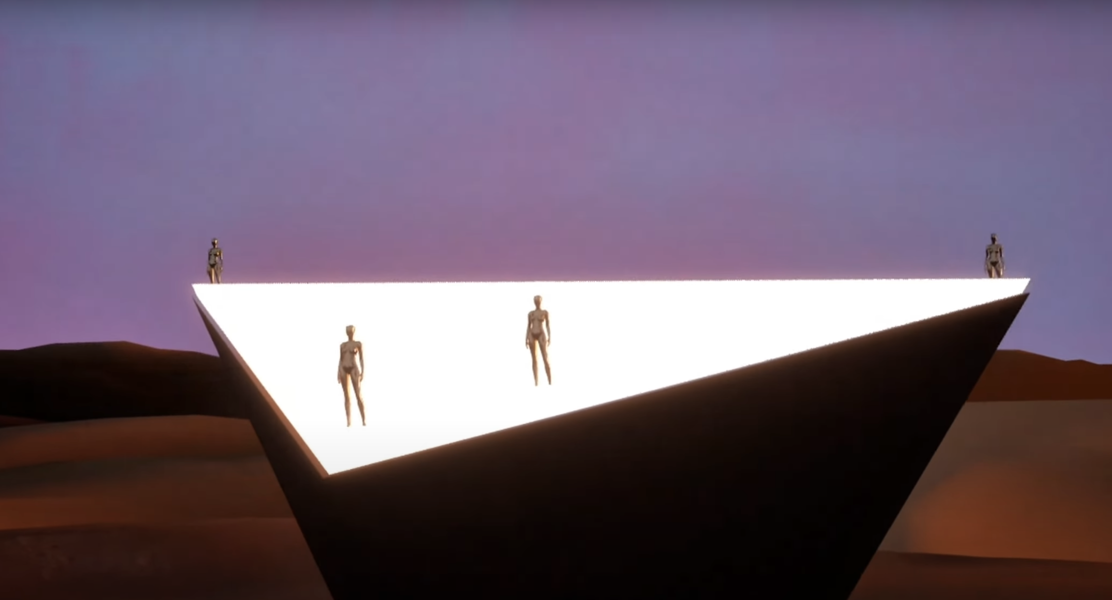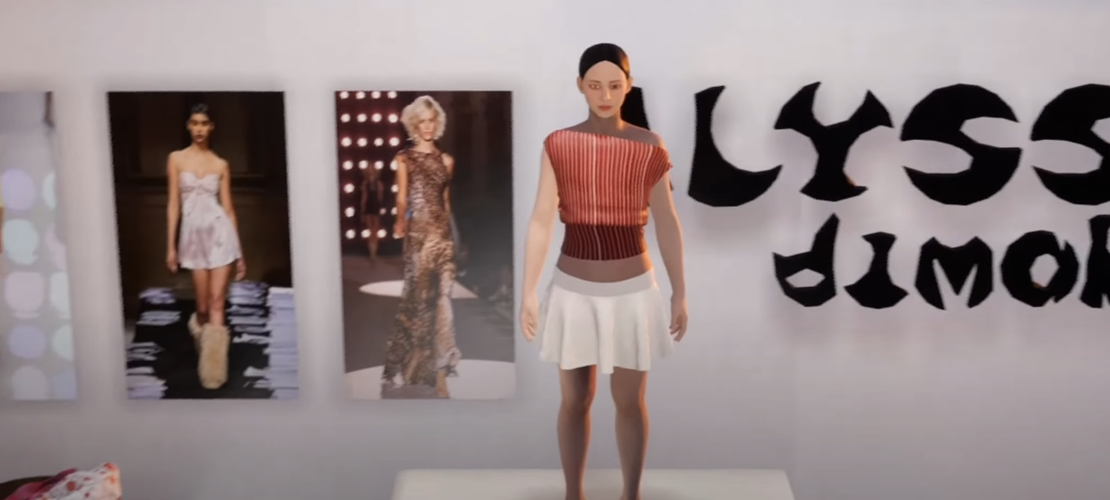

Their project came to life as part of a Stage 6 Industry Placement unit, where AVFX students teamed up with Fashion Marketing and Fashion & Sustainability students to explore what’s possible when fashion moves into the virtual world. The goal? Use immersive tech to push boundaries and bring sustainability, storytelling, and retail innovation into one bold, explorable experience.

Fred and Clove spent more than 120 hours crafting the showroom using Unreal Engine, a platform more commonly used in game design, to showcase CLO3D garments created by Fashion & Sustainability students.
The FS cohort, mentored by Tamara Leacock, designed digital outfits using CLO3D — software that transforms flat patterns into hyper-real 3D renderings.
Fred then staged those garments in a virtual environment, treating each piece like a cinematic character. “They had to feel present in the space,” he explained.
Using tools like Universal Scene Descriptions (USD) and Alembic caches, Fred preserved garment details and textures, then used Unreal’s lighting and shading systems to give each piece a real-world feel. The result? A surreal desert showroom filled with dry branches, sand dunes, and crystal forms.
While Fred built the environment, Clove translated each fashion student’s mood board into fully realised visual spaces. “I’m really proud of how effectively I was able to take the students' mood boards and translate them into the space,” they said.
The showroom became more than a display: it was an immersive gallery that captured the story behind each garment, designed to make audiences feel fashion, not just view it.

Fred and Clove credit their success to smooth, balanced teamwork. With regular check-ins and clear task division, they used a “divide and conquer” approach: Fred handled lighting, scene design and rendering, while Clove focused on garment styling and visual direction.
Fred said working with the fashion students pushed him creatively: “Their concepts were so rich. It pushed me to make the environment worthy of them.”
Digital fashion offers a promising solution to physical waste, but it’s not carbon-free. As Clove pointed out, “To run these programs you are still consuming power and water — sometimes more than a sewing machine or overlocker.”
While tech opens up new sustainable pathways, it also demands cleaner energy to fully live up to its green potential.

Clove, who recently graduated with a double degree in Fashion Sustainability and AVFX, is now building a digital art portfolio. “I want to use my knowledge of fashion and design to create well-informed, accurate character designs and 3D models,” they said.
Fred, currently finishing the AVFX program, is diving into immersive storytelling and animation. “Fashion was a surprising and rewarding space to explore. I’d love to work on future projects like this — especially ones that blend storytelling across games, film, or branded experiences.”
This virtual showroom didn’t just showcase fashion — it brought it to life. As Fred put it:
“You can create moods, environments, and even full narratives around a piece, which really helps tell the designer’s story, all while reducing physical waste and cost.”
The future of fashion is digital, immersive, and just getting started.
This blog was adapted from an article by Eliya Crossman, originally featured in George Magazine, Issue 3. 👉 Read the full issue of George here